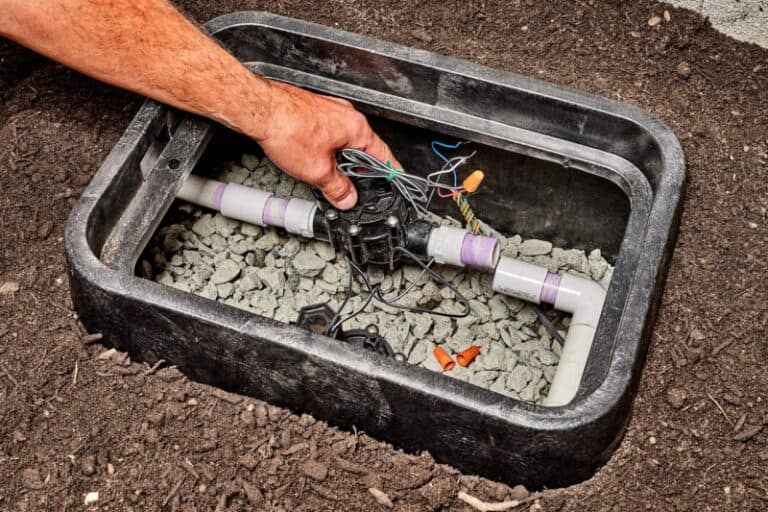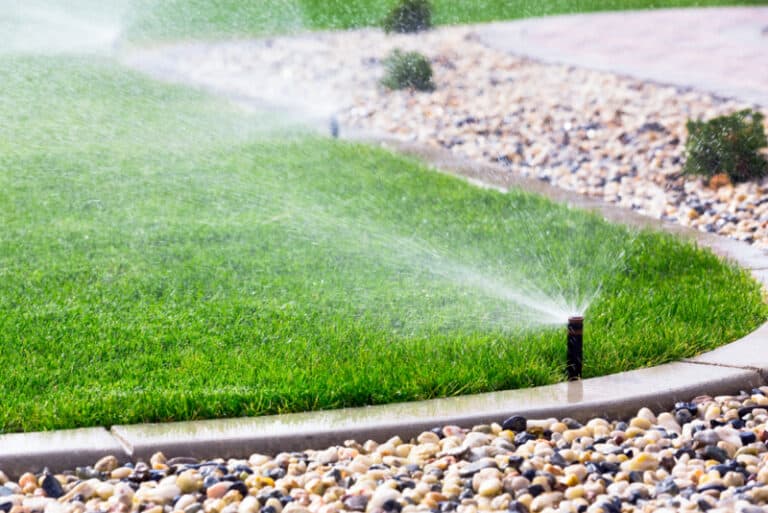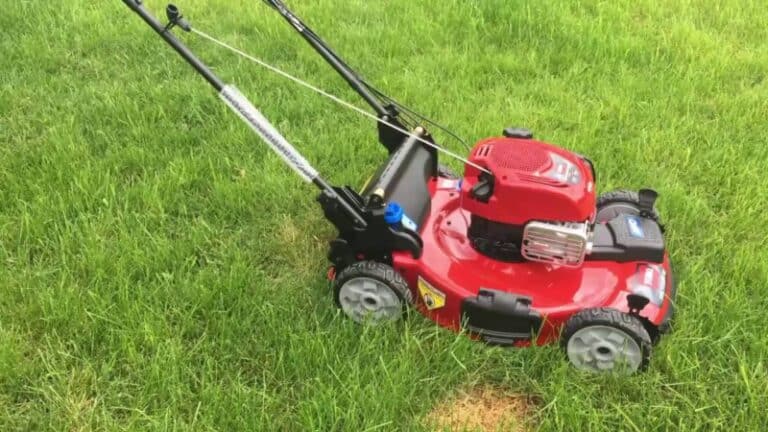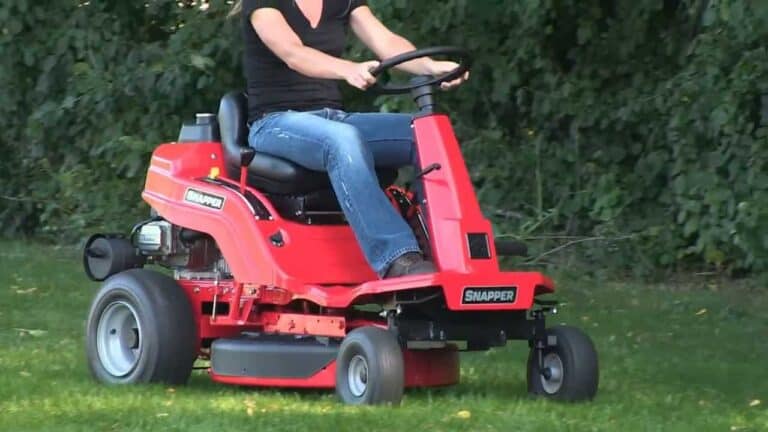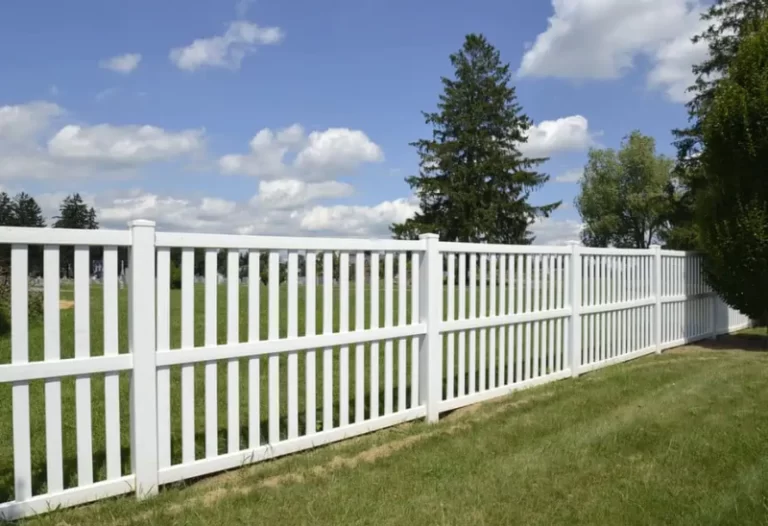Is it Possible To Use a Sod Cutter To Level Ground?

The quick answer to this question is – yes, using a sod cutter to level ground is very do-able. However, it can be a tedious process, especially if you have a large area of ground that requires leveling. In this article, we’ll provide a step-by-step guide showing how the task can be accomplished and leaving the ground area as level as can be achieved.
Using a sod cutter to level ground is often necessary when you’re installing a new pool or patio, or even when a home is being built on grassy land. In the case of new construction, the leveling will generally be done by some heavy equipment, since the lot would be too large to tackle using manual methods. But if you need a pool-sized area of ground leveled off in your backyard, a sod cutter will definitely do the trick.
Types of sod cutters
Before we address the ‘how’ of sod-cutting, let’s consider the ‘what’ for a moment. According to Inside the Yard, there are several types of sod cutters available in lawn and garden shops which would be ideal for home projects. The best approach is to purchase a sod cutter which is suited to the dimensions and the characteristics of the terrain around your house. You should also understand how an individual machine will be used in different scenarios.
- Motorized cutter: for really large areas of ground that require leveling, it’s best to use a motorized sod cutter. This is a powerful machine that requires a considerable amount of strength to control it during operation. Before purchasing one of these, make sure it’s something you can handle and that it’s not beyond your physical limitations.
- Square-edge sod cutter – this looks very much like a shovel having a short handle and a rounded edge. It is an ideal tool for use when you’re operating on a small area of turf or when you’re trimming your garden. When using a square-edge sod cutter, it should be placed in the soil, and then pushed in with the boot on your foot. Try to make the entry point for your sod cutter as close as realistic to the point where grass terminates along the sidewalk. You can then use an ordinary shovel in the same manner as a sod cutter to remove all the turf you’ve extracted, and then go ahead and dispose of it.
- Kick cutter – the kick cutter is equipped with a cross bar that has two handles fixed together. It also has a roller and cutting blades, and the blades can be adjusted to the circumstances of the particular project you’re undertaking. In order to move the kick sod cutter, you actually have to kick the crossbar. This is the best approach when you have a project that requires cutting and rolling long tracts of sod.
Step-by-step guide to leveling ground with a sod cutter
A sod cutter is actually quite well suited for leveling ground, and once you’ve reconfigured the soil in an area, you’ll be able to install a fresh, new lawn easily. A sod cutter is usually gasoline-powered and is capable of digging up earth in a specific area to loosen it up. Once the soil has been loosened up, it can be distributed evenly, and all those areas that were not level before can be made level. A sod cutter can be an invaluable machine when it comes time for a ground leveling project, because it will speed the work along and save considerable time and effort. According to Home Affluence, here are the steps necessary to use your sod cutter for a ground leveling project:
- Eliminate any uneven areas – if you have noticeably uneven areas in the section of ground you’re operating on, you should consider the causes for that unevenness. For instance, the ground may be unlevel due to tree roots, wild animal damage, weight depression, accumulation of earthworms, or impaired water drainage. If you have animals contributing to the unevenness, you might need to section off this area of ground, so it’s inaccessible to them. You may have weak points in your fence that allow wild creatures to freely enter your yard. If you have damage from poor water drainage, that should be repaired at the same time you’re doing your ground leveling project.
- Calculate how much leveling will be necessary – it’s good to have a plan at the outset when you’re tackling a ground-leveling project. In order to do this, you’ll need a long stick, about six feet or higher. The stick will have to be at least as long as the biggest height difference you would encounter anywhere in the tract of ground you’re working on. Then, you should retrieve a piece of string and stand where the ground is highest. Fix the string in place to the wooden stick you’ve been using. Then you can align the thread of the string horizontally to see how far off parallel the rest of the ground is.
- Loosen and distribute the earth – the actual leveling is accomplished by subtracting the earth from a higher level and re-positioning it at a lower level. To accomplish this, it may be necessary to use some tools beyond your sod cutter, for instance, a fork and pickaxe, a tiller, and possibly even a mini-excavator, if you’re working on a very large area. If you’re bringing in topsoil from an external source, it won’t be necessary to loosen your current soil. However, you’ll still need to observe the same leveling techniques before finishing the job.
- Remove roots and stones – after you’ve got the soil all loosened up, it should be much easier to pick out stones and roots that might interfere with your work. There’s no way to get around this task, which basically must be done by hand. If you happen to have a stoner and an uprooter, that can save you a little bit of effort. If your plan is to re-seed the area or install some kind of vegetation, it will be advisable to leave the really small stones buried in the ground, because they will contribute to ventilation and soil that is less compacted.
- Level the ground – now is the time when your sod cutter comes into play. Using a sod cutter, level all the soil in the affected area, so that it as a nice flat shape. Each time the sod cutter passes over a section, it may expose additional flaws needing correction. The best way to use your sod cutter is by turning it on and moving the lever to the neutral position. Then you need to engage the blade lever and lift the handlebar using your other hand. Set the depths you’ll be working at and lock it in using the depth knob. Then all you have to do is continue leveling the ground until you are satisfied.
- Allow the ground to settle – it will probably take around 48 hours for the soil to settle in the area that you’ve just worked. In order to facilitate the settling process, it would be best to water the entire section. Don’t walk on the ground that you operated on, and don’t put anything there which might sink or disturb the level ground you just worked. Once 48 hours have passed, use your roller to further level the ground operated on. If you have brought in topsoil from an eternal source, allow a little more time for the settling process to take place.
Frequently asked questions
Q: Should I water the ground before using a sod cutter?
A: Yes, you should, because it will give extra traction to the sod cutter, and that will make the project a little easier.
Q: How hard is it to use a sod cutter for leveling ground?
A: As long as you follow the steps highlighted in the procedural guide above, it should not be difficult to use your sod cutter for leveling ground. It will also help if you’ve purchased a high-quality sod cutter, i.e. one that does not experience frequent breakdowns or interruptions of service.
Q: Can a sod cutter cut through the roots of my grass?
A: A sod cutter is generally capable of cutting through grass roots, provided that they are growing no deeper than 1.5 inches. When they grow deeper than that, your sod cutter will probably not handle them, and it will cause grass to re-grow in that spot on your lawn.
Q: Can I use my sod cutter on rocky or uneven ground areas?
A: It’s best not to use your sod cutter on rocky areas, because it can bend the tines, and in a worst-case scenario, it can damage or ruin those tines. You can use your sod cutter on uneven ground, but you’ll have to be aware of the various depths in each section you operate on.
You can also read:

